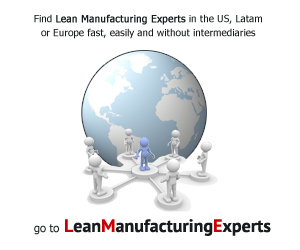Lean Manufacturing Begins with an Effective Plant Audit
Operations expert, Henry Quesada Pineda from Virginia Tech shares an effective tool for conducting lean manufacturing and process improvement audits. This resource can help you improve your operations.
Every manufacturing plant that wants to stay in business looks for ways to lower costs and become more efficient. Your competitors are always striving to drive out cost. This is especially true in the highly competitive forest products sector, particularly pallet and sawmill companies. You may have heard of lean manufacturing and be familiar with its core concepts. But how well are you doing lean at your facilities?
The only way to really know is to conduct a lean audit. Even the idea of such a review may sound daunting and expensive. But with a few simple tools you can start the process and begin a transformation on your systems that will save money on your bottom line.
Attached at the end of this article is a link for a free audit tool that you can use in your own company. It was developed by researchers and staff at Virginia Tech to conduct basic worksite assessments on lean processes. Normally, you might pay thousands of dollars for such a tool. But this article puts everything in your hand that you need to get started.
So where do you begin? It all starts with assembling a team of people from your company who work in different departments who will embrace and help lead the lean processes improvements. If you have multiple facilities, you can either establish a team at each plant or assemble individuals from various facilities if you want to do a company-wide approach. Be aware though that the real solutions must be implemented at the individual plant level. Otherwise, you will not be able to truly achieve the greatest possible savings and efficiencies that lean can provide.
Our audit tool has eight main sections or areas of emphasis for you to consider. Some companies may choose to cover all eight at once. Others will select the top category or maybe the top three categories. Since they go so well together, we suggest that you start with the top three categories – 5S, visual controls and safety, and total productive maintenance. And if you can only do one – start with 5S.
The assessment offers five grade possibilities – unacceptable, poor, good, excellent, and outstanding. You may develop your own scoring system based on your company processes and priorities. So who evaluates and grades the locations? You can bring in an outside expert. And/or you can have people from various plants and jobs within those facilities grade their own facilities. It is important for everyone to know that the evaluation will not lead to punishment or job loss. The idea is to make the facilities more cost competitive, efficient and safer. In the end, doing these things will improve the overall workplace and help secure jobs.
See the legend on page 33 of the digital magazine on our web site to get an idea for what each score means. Feel free to make changes as you see fit. This tool is just a resource to get you started.
When you conduct audits, it may be a good idea to use video to analyze each section. This allows for more in-depth review later by the lean team. You may also want to take pictures and put up examples at various plants to demonstrate what is expected. Remember that many people learn better by visual instruction. This may especially be true if you have multiple primary languages used by your employees.
Let’s look at the first main section for analysis. 5S is a term used by lean experts that stands for (sort, set in order/organize, shine, standardize and sustain). The Enterprise has carried other articles covering these concepts in detail. See the links accompanying this article.
The focus of this section is basic analysis, education and standardization of key areas. Remember you are trying to eliminate wasted motion and resources. You are looking to reduce downtime and remove barriers to improved productivity. Some of the greatest savings may be achieved by greater processes, not just new equipment.
The second major section is safety and visual controls focusing on signage and other methods to convey safe practices and requirements. This covers anything from emergency exits and practices to paths for forklift and pedestrian traffic and more.
The third initial major section in the assessment is total productive maintenance. And the key to keeping everything running when you have machinery is good maintenance. Otherwise, your line will be down when it should be running. Is preventative maintenance being done on a regular basis? Are you using a data and real-world approach to maintenance? Or are you just putting out fires? Are there leaks (compressed air or oil) in the equipment? What about power and fuel consumption? You need to evaluate all of these areas and make sure that somebody is monitoring the maintenance staff.
There are five more sections left which are self-explanatory. How you decide to split them up depends on your process. You should conduct lean audits at least once per year. And you may choose to rotate who is on the committee. Everyone should do a basic quick lean walk around every day before starting the production line. Employees should look for things that are out of place or create hazards, such as items on the floor or in the way of forklift lanes. Employees should look for items that need maintenance or could be stuck in the wrong setting. It doesn’t take long, but a 2-3 minute visual inspection can prevent accidents and ensure the line keeps running once everyone starts.

 News, training, experts opinion, bibliography, software and everything about Lean world.
News, training, experts opinion, bibliography, software and everything about Lean world.
